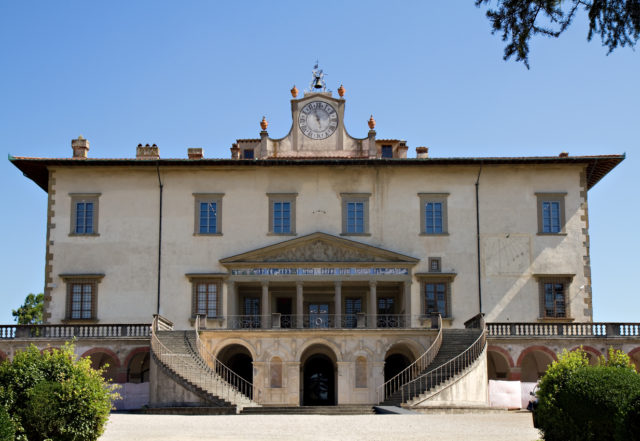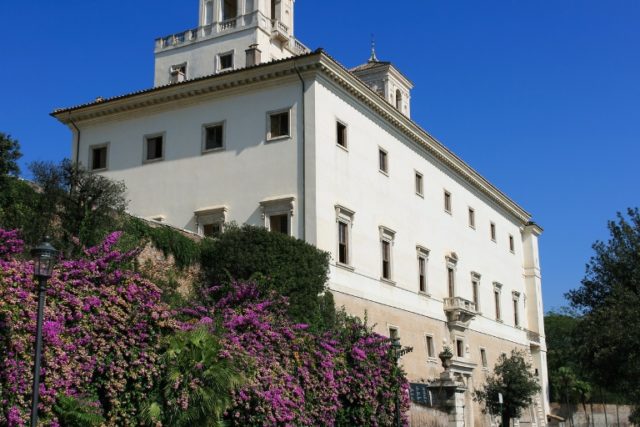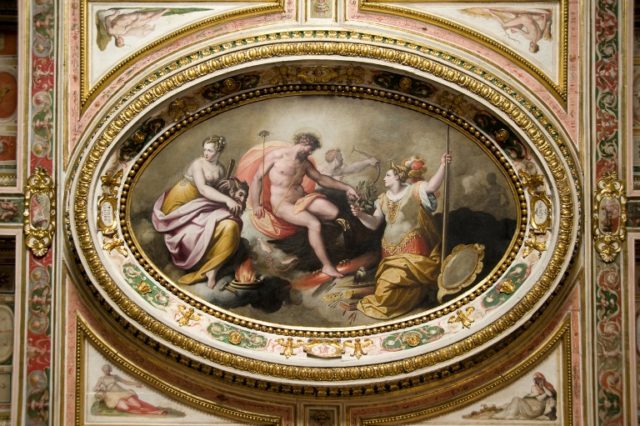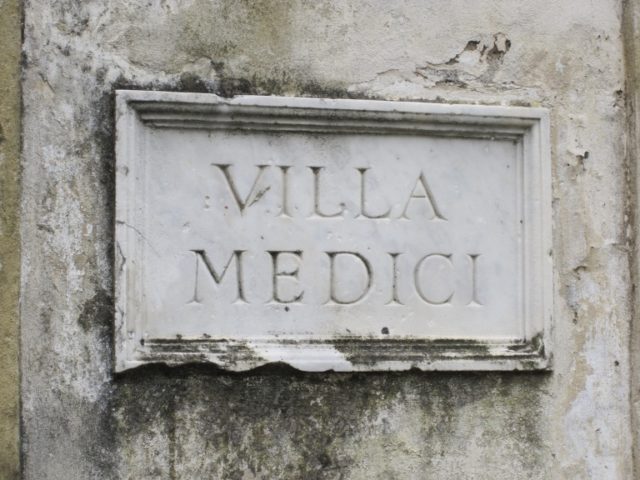Poggio a Caiano is a small town situated in the heart of Tuscany. Like many other towns in the region, it offers medieval churches and exquisite scenery. What makes this town special is its exceptional Renaissance villa, which was built by the most famous member of the powerful Medici family in the 15th century.
The villa is one of the most beautiful residences ever built by the Medicis. It is surrounded by lovely gardens, which are mostly a reconstruction of the original ones. As in every Medici garden, the grounds feature citrus trees planted in large pots. Sculptures and statues populate the garden as well, the most famous being “Capture of the Water Nymph Ambra by Ombrone.” Because a medieval castle named Ambra once stood on the property, the villa is also known as Villa Ambra.

The construction of Villa Medici at Poggio a Caiano was initiated by Lorenzo de Medici, also known as Lorenzo the Magnificent. He was attracted by the ruins of the old castle and decided to transform them into a beautiful villa. Lorenzo de Medici commissioned the Italian architect and sculptor Giuliano da Sangallo, and construction began in 1485.
Villa Medici at Poggio a Caiano. Author: Massimilianogalardi. CC BY-SA 3.0Unfortunately, Lorenzo de Medici did not live to see his villa completed. After his death in 1492, construction was halted for the next 20 years. His son Giovanni di Lorenzo de’ Medici continued the construction following the original designs and by 1520, the villa was finally completed. The Medici family were well known for their love of art, and Giovanni was no exception. He commissioned some of the greatest artists of Tuscany to decorate the interior of the villa.

Among them were Jacopo Pontormo, Filippino Lippi, Andrea del Sarto, and Andrea Sansovino, and their efforts produced impressive frescoes and remarkable sculptures preserved to this day. The Pontormo frescoes in the main salon are probably the most famous on the property. Giovanni was the first member of the Medici family to become pope and was known as Pope Leo X.
The villa served as a summer residence for the family. It hosted social gatherings and celebrations, including the weddings of Alessandro dè Medici and Margherita d’Austria, Francesco I and Bianca Cappello, and Cosimo I and Eleonora da Toledo. The villa had a theatre that performed literary classics and Greco-Roman legends and myths. However, the villa is also connected to an unpleasant event, considered by many to have been a murder. Both Francesco I and Bianca Cappello died in the villa, officially from a deadly fever, but many believe they were in fact poisoned.

When the last descendant of the Medici family died, the villa became the property of the Asburgo-Lorena dynasty, the new Grand Dukes of Tuscany. They did not make any alterations and continued to use it as a summer residence. After Tuscany was conquered by Napoleon, the villa became the favorite residence of his sister Elisa Baciocchi Bonaparte, who would eventually be given the title of Grand Duchess of Tuscany. She made some changes to the villa’s interior, as well as the exterior, with the help of the architect Pasquale Poccianti.
The villa was modified for the last time by King Victor Emmanuele II, when Florence was proclaimed the capital of Italy. Significant changes were the addition of new stables and converting one of the grand halls into a billiard room. Since 1914, the villa has been state property and open to visitors.

Two museums show different aspects of the villa. One is known as the Historical Apartments and includes a presentation of the rooms of its famous residents, while the other, the Museum of Still-Life, hosts an exhibition of paintings collected by the Medici family.
In 2013 Villa Medici at Poggio a Caiano was declared a UNESCO World Heritage Site. The villa is among the first structures built in the Renaissance architecture and would serve as a model for many others.
